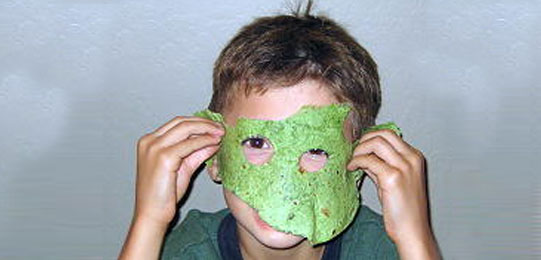
Does Peer Pressure Keep Your Child From Eating Healthy Food?
Today, I sent my son to kindergarten with turkey, carrots, and lettuce rolled up in a spinach wrap. green tortilla wrap Delicious, healthy, and colorful. My son picked the ingredients himself, so I knew he would eat it.
What was I thinking? I sent my child to kindergarten with a GREEN sandwich. So much for mother of the year.
Needless to say, the other kids at my son’s lunch table teased him about having a green sandwich, saying “Ewww, gross” when they saw it. When the sandwich came home in the lunchbox, with only a few bites eaten, I knew something was wrong.
Clearly my poor son is a victim of his mother’s obsessions.
My husband chastised me for sending my son to school with a green sandwich. Had I become the mother in My Big Fat Greek Wedding, sending my child to school with weird food?
Why couldn’t I just give him Wonder bread sandwiches, juice boxes, and Cheetos like everyone else?
After a family huddle, I realized all my children are regularly teased about eating healthy food. Peer pressure and healthy eating was a problem. My son’s sisters were more than happy to dish out advice on how to handle the comments on his lunches.
Diplomatic sister #1: “Tell the other kids your food is yummy and that you really like it”.
To-the-point sister #2: “Tell the other kids to ‘cut it out’ with the teasing. Tell them to ask their mom to buy food like yours so they can try it too.”
So what should you do about the negative impact between peer pressure and healthy eating?
How to Help Your Child Handle
the Healthy Food Teasing
What a child can say to their peers
- My food is really tasty and I really like it!
- Cut it out! Why don’t you ask your mom to buy this food for you so you can try it too.
- My mom loves me so much, she lets me eat this healthy food.
- Yes, you are right. My food is “ ______”. Fill in blank with weird, gross, creepy, disgusting, etc.
What you can do as a parent
- Pack lunch together, so you and your child agree about what’s in the lunchbox. Better yet, have your child involved in the shopping, selection and preparation.
- Don’t try new food items in a school lunch. Test them at home first to make sure your child likes them.
- Put only one “weird” item in their lunch box every day. After several days of jicama in my daughter’s lunch box, no one at school cares about it. Now they are actually interested in what emerges from her lunchbox.
- Never make a child feel that unhealthy foods are off limits, or they will feel deprived, which causes bigger issues with food. At our house, we talk about food choices in terms of everyday and occasional foods. My kids do have “occasional” foods in their lunch boxes once in a while.
- Be a good role model to give your child confidence. Pack you own healthy lunch, and make healthy choices when you are with your adult friends.
As for my son and the humiliation of the green sandwich, he is ready to speak up for himself. He wants to bring purple peppers and pink apples for snack tomorrow.
Bring It On, kid style.
I love these children. They can handle the peer pressure and healthy eating better than their mom.
Mary Rentoumis writes about her humorous adventures in feeding her family a healthy diet on her website, Healthy Diet.com. Although Mary cannot cook, she endures kitchen disasters and grocery store mishaps to create a healthy diet program. With an Ivy League degree in History and Chemistry, Mary is comfortable understanding on a molecular level why some foods are not healthy choices. Mary regularly uses her scientific background to explain to her youngest son why he can’t have candy bars for breakfast.